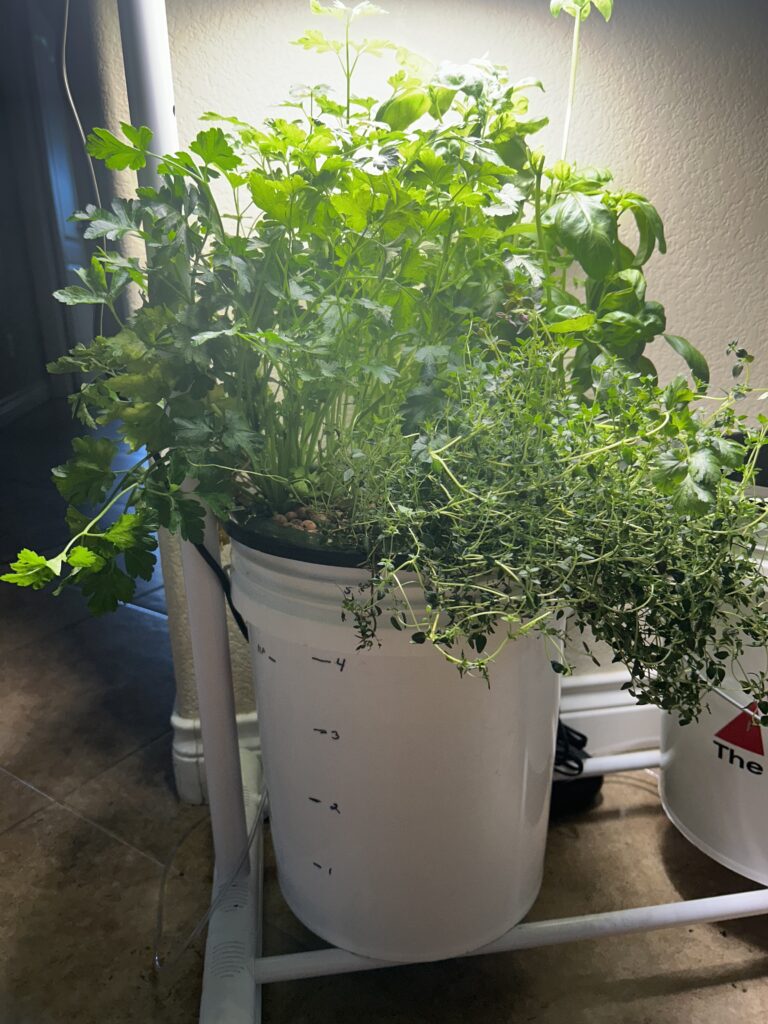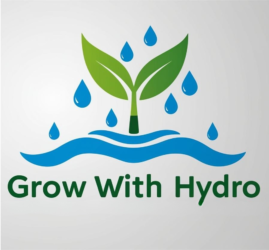Hey there, fellow plant enthusiasts!
If you’ve been dabbling in hydroponics (or even if you’re just hydro-curious), you already know it’s a game-changer for modern agriculture. As someone with a biology background and a love for sustainable farming, I’m always amazed at how hydroponics flips the script on traditional soil farming. But while we’re patting ourselves on the back for using 90% less water than conventional ag systems, there’s still plenty of room to up our game in minimizing water waste.
Let’s break it down, from how water flows in hydroponic systems to tech innovations and practical tips for keeping things water-wise.
Understanding Water Use in Hydroponic Systems
Hydroponics 101: Water Efficiency Like a Boss
At its core, hydroponics is all about delivering nutrients directly to plant roots in a water-based solution. Compared to traditional agriculture, where tons of water are lost to runoff, evaporation, and absorption into the soil, hydroponics uses closed-loop systems to dramatically cut water use. Some estimates say hydroponics uses up to 90% less water than soil-based methods.
Recirculating Systems: The Heartbeat of Hydroponics
Most hydroponic setups, whether it’s nutrient film technique (NFT), deep water culture (DWC), or ebb and flow, rely on recirculating systems. This means water is continuously cycled through the system, delivering nutrients and oxygen to plant roots, and then returned to the reservoir for reuse. In theory, this is a near-perfect system, but in practice, water loss happens.
Where Does the Water Go?
Even in hydroponics, water isn’t invincible. Loss points include:
- Evaporation from exposed reservoirs or system surfaces
- Transpiration from plants (which is inevitable and necessary)
- Leaks from poorly maintained pipes or joints
- System maintenance losses, like when we dump and refresh reservoirs
Knowing where we lose water is key to plugging the leaks (literally and figuratively).
Benefits of Minimizing Water Waste in Hydroponics
Save Money, Grow More
Let’s be real: water isn’t free, especially if you’re using treated or filtered water in your system. Reducing water loss not only saves cash but also lets you reinvest in better equipment or expand your grow. And with water scarcity becoming a global concern, efficient water use is just good business.
Check out my 5-Gallon DWC herb garden in expanded clay pebbles:

Eco-Warrior Vibes
Hydroponics already has a smaller environmental footprint than traditional farming, but by minimizing water waste, you’re reducing strain on local water supplies and contributing to sustainable agriculture. Less wasted water means less runoff into the environment and a smaller carbon footprint from water treatment and pumping.
Boosting Yields with Smart Watering
Believe it or not, efficient water use can actually improve plant health and yields. Overwatering (even in hydroponics) can cause root rot or nutrient imbalances. Precise water management ensures plants get exactly what they need, no more, no less, which translates to better quality and quantity.
Technological Innovations in Reducing Water Waste
Smart Irrigation Systems: The Future is Now
Hydroponic setups are getting smarter with the integration of smart irrigation systems. These systems use real-time data from sensors to deliver water exactly when and where it’s needed. Think of it like giving your plants a customized hydration schedule.
Sensors + Automation = Winning Combo
By incorporating moisture sensors, flow meters, and automated valves, growers can monitor and adjust water flow on the fly. Some systems even integrate with apps or dashboards, letting you control water use remotely. For example, I’ve seen commercial hydro farms cut water use by 30% just by switching to sensor-driven irrigation.
Real-World Success Stories
One of my favorite case studies comes from a lettuce farm in Arizona that integrated a cloud-based sensor network. They reduced water consumption by 25%, increased yields by 15%, and saw a major drop in nutrient waste. Similar success stories are popping up around the globe, showing that tech and sustainability can absolutely go hand in hand.
Effective Water Recycling Techniques
Recycling: It’s Not Just for Your Cans
Hydroponic systems lend themselves beautifully to water recycling. When managed properly, the same water can be used over and over, with only small top-ups to account for plant uptake and unavoidable losses.
Filtration Matters
Recycling water means you need to keep it clean. Filtration systems (like sand filters, UV sterilizers, and biofilters) help remove pathogens, algae, and particulates from the water before it re-enters the system. While filtration adds to your initial setup costs, it pays off in reduced water waste and healthier plants.
Keep It Clean, Folks
Regular cleaning and maintenance of tanks, pipes, and reservoirs are crucial. Algae buildup, biofilms, and salt accumulation can clog systems and degrade water quality. If you’re reusing water, consider a scheduled system flush and filter check every few weeks.
Role of Nutrient Solutions in Water Conservation
Finding the Sweet Spot
Nutrient solutions need to strike a balance between delivering essential minerals and minimizing excess salts that can build up in recirculated water. Overly concentrated solutions not only waste nutrients but can lead to osmotic stress for your plants.
Optimizing Nutrient Mixes
Some growers use EC (electrical conductivity) meters to monitor nutrient levels in real-time, adjusting the mix based on plant stage and needs. Others are exploring slow-release or nano-nutrient formulations that reduce the need for frequent reservoir changes.
Beyond Traditional Nutrients
There’s a growing interest in organic or bio-based nutrient solutions, which tend to be more forgiving and environmentally friendly. While these can be trickier to balance, they offer a more sustainable option for long-term hydroponic success.
Implementing Sustainable Practices for Long-term Success
Make a Plan, Stan
Every hydro system is unique, so start by creating a custom water management plan. Map out your water sources, loss points, and usage patterns. Set clear goals for reducing waste, whether it’s cutting losses by 10% or recycling 90% of your system water.
Audit and Adjust
Think of system audits like your annual health checkup. Periodically inspect pipes, seals, filters, and reservoirs for leaks or inefficiencies. Tracking water usage data over time can highlight trends and areas for improvement.
Team Up for Sustainability
Finally, don’t go it alone! Tap into the knowledge of your local hydroponic community, industry experts, or online forums. Sharing successes and failures can save you time, money, and frustration. Plus, it’s just more fun to geek out over hydro systems with people who get it.
Case Study Spotlight: Smart Water Management in Action
Let’s look at a real-world example to inspire your water-wise journey.
Case Study: Arizona Lettuce Farm
A commercial hydroponic lettuce operation in the Arizona desert faced challenges with water availability and cost. They invested in a cloud-based sensor system that tracked moisture, temperature, and nutrient levels in real time.
Key changes:
- Installed automated valves for precise water delivery
- Used UV filtration to safely recycle 80% of system water
- Adjusted nutrient mixes based on EC sensor data
Results:
- Water consumption dropped by 25%
- Yields increased by 15%
- Lower fertilizer use and improved plant health
Takeaway: With smart monitoring and filtration, even large-scale systems can slash water waste and boost productivity!
Final Thoughts
Minimizing water waste in hydroponic systems isn’t just about being eco-friendly, it’s about maximizing your system’s potential, saving money, and growing healthier plants. With the right mix of smart technology, practical maintenance, and a dash of sustainability-minded creativity, you can turn your hydro setup into a model of water efficiency.
So, whether you’re rocking a backyard NFT system or managing a commercial-scale vertical farm, remember: every drop counts!
Happy growing, friends!
